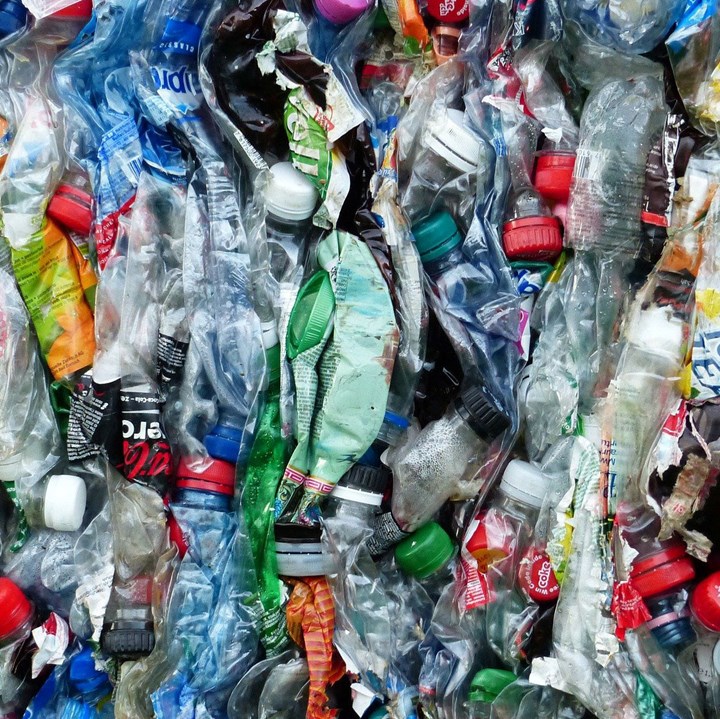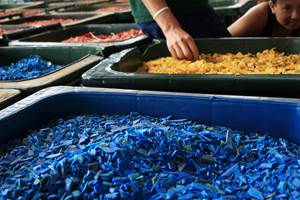Quality Guidelines of Plastic Waste Feedstock for Pyrolysis
Eunomia’s new study on behalf of the Alliance to End Plastic Waste underscores the need for robust collection and sorting systems to supply quality feedstock for chemical and mechanical recyclers.

A new study conducted on behalf of the (Alliance) by lays out nine requirements for feedstock that would be suitable for pyrolysis. Entitled, “Feedstock Quality Guidelines for Pyrolysis of Plastic Waste”, the study confirmed that pyrolysis operators generally required well-sorted, clean feedstock comprising about 85% PE and PP. Moisture limits of around 7% were recommended. Indicative thresholds for contaminants should also not exceed 15% in total, with additional limits on various categories.
Moreover, the study further underscored the need for robust collection and sorting systems to supply quality feedstock to both chemical and mechanical recyclers as part of a plastic circular economy.
The study involved interviews with some 32 companies and organizations from across the plastic waste value chain in Asia, North America and Europe. It.aims to provide clarity on feedstock requirements and propose model specification guidelines that can be used to enable greater alignment across the recycling value chain. This is especially as feedstock considerations will continue to evolve, and clearer standards on optimal feedstock quality will emerge as the sector matures.
Pyrolysis is the process of breaking down plastic waste at high temperatures without oxygen to produce pyrolysis oil, which can be used in the production of new plastics as a replacement for fossil feedstocks. The process can target flexible PE and PP to create market demand for these hard-to-recycle materials. This further complements mechanical recycling processes which focus on rigid plastics.
However, there are limitations as not all packaging especially multimaterial films, are suited for pyrolysis. Overcoming this will require more circular design together with a transition to multimaterial or more simple films that fulfil the requirements above. Packaging items such as plastic bags, films, sachets, and wrappers comprise as much as 45% of the waste generated in households. These everyday items are frequently contaminated and are difficult to collect, sort, transport, as well as recycle. Multilayered materials comprising a combination of plastics, paper or foil further add to the complexity of processing these types of packaging. While many technologies to address these issues already exist, most have yet to be widely adopted and recovery rates remain low.
Noted Eunomia Research & Consulting’s director Sarah Edwards, “Specification guidelines largely exist for mechanical recycling although final specifications are always agreed between the buyer and seller. The pyrolysis specification that resulted from the research is a guideline, and the technology providers and operators we consulted had slightly different requirements. As the review was focused on pyrolysis, it is important to note that there are other advanced recycling technologies. As policy helps drive up recycling rate targets, understanding the specification of plastics that can be managed through other advanced recycling will be critical for sorters as well as mechanical recyclers.”
Said Martyn Tickner, chief advisor of the Alliance’s technical solutions center, “Improving our knowledge of feedstock requirements for pyrolysis can help progress the industry’s understanding of how chemical recycling and mechanical recycling can work alongside each other. Stakeholder groups ranging from packaging manufacturers to government agencies are interested in the potential of chemical recycling to add a new dimension to plastic waste recycling, with the expectation that the technologies will complement increasingly advanced mechanical recycling. We hope this white paper serves as a starting point for discussions between pyrolysis operators and material suppliers on the types of recycling systems and feedstock that need to be developed.”
Here's the link to the study.
Related Content
ICIS Launches: Ask ICIS Generative AI Commodities Assistant
Said to be the first of its kind, this AI assistant will enhance access to ICIS’ intelligence and insights for the energy and chemical markets.
Read MoreNPE2024 Materials: Spotlight on Sustainability with Performance
Across the show, sustainability ruled in new materials technology, from polyolefins and engineering resins to biobased materials.
Read MoreGeneral Polymers Thermoplastics to Further Expand Distribution Business
NPE2024: Following the company’s recent partnership buyout, new North American geographic territories are in its sight.
Read MoreAt NPE2024, Follow These Megatrends in Materials and Additives
Offerings range from recycled, biobased, biodegradable and monomaterial structures that enhance recyclability to additives that are more efficient, sustainable and safer to use.
Read MoreRead Next
See Recyclers Close the Loop on Trade Show Production Scrap at NPE2024
A collaboration between show organizer PLASTICS, recycler CPR and size reduction experts WEIMA and Conair recovered and recycled all production scrap at NPE2024.
Read MoreMaking the Circular Economy a Reality
Driven by brand owner demands and new worldwide legislation, the entire supply chain is working toward the shift to circularity, with some evidence the circular economy has already begun.
Read MoreLead the Conversation, Change the Conversation
Coverage of single-use plastics can be both misleading and demoralizing. Here are 10 tips for changing the perception of the plastics industry at your company and in your community.
Read More













